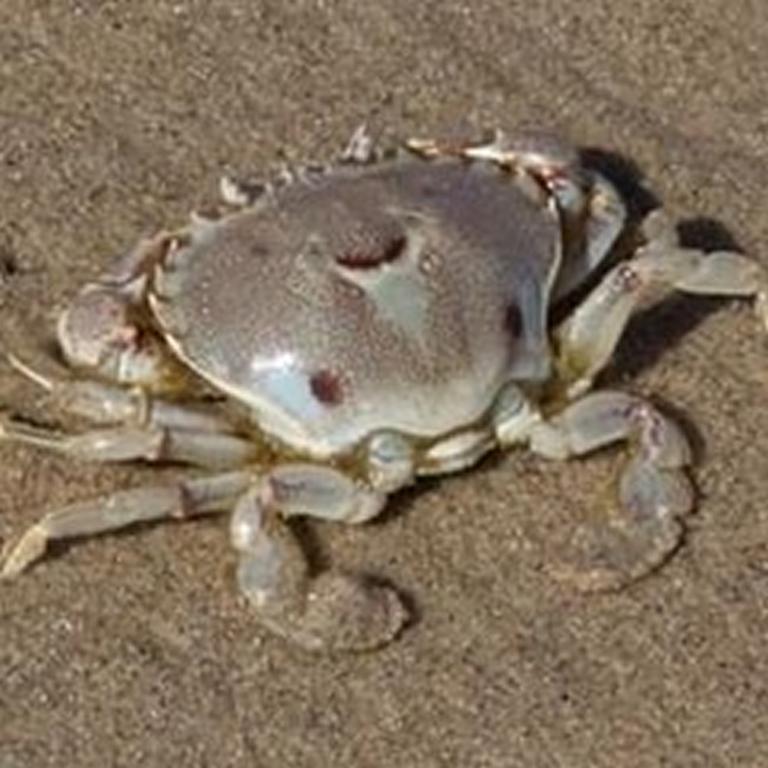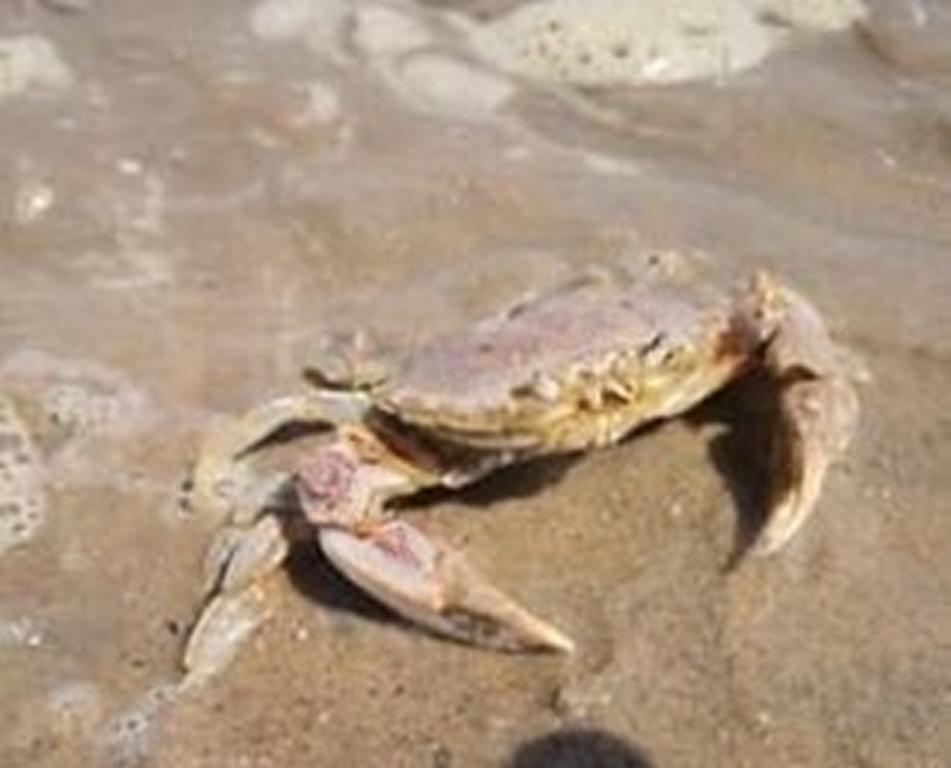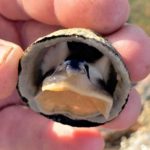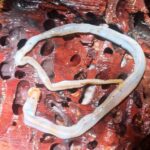Description of the crab species
Three-spot swimming crabs (Ovalipes trimaculatus) have a rounded triangular carapace with five legs on either side. The tips of the back pair of legs are flattened into paddles for better maneuvering in the water. Adorned with rusty-brown flecks, the carapace features three larger markings that curiously resemble a ‘sad’ face. Its nippers are equipped with ridges and sharp cutting teeth, ready for action.

Uses of these crabs
These Three-spot swimming crabs are widely sought after as fishing bait along the Namibian coastline. Anglers target the Westcoast Steenbras using this bait, while certain shark species, such as the Spotted Gulley shark, find them irresistible. While the Three-spot swimming crab is indeed edible, its yield of meat is rather low. If you’re feeling adventurous, steam it for a few minutes and crack open the shells to access the meat.

Finding and harvesting Three-spot swimming crabs
To encounter Three-spot swimming crabs, venture into the breaker zone off the sandy beaches of Namibia’s coastline. Enticing them is an art: simply position fish remains on a spike amidst the surf, acting as an irresistible lure. Witness their curious nature as they gravitate towards the bait, swimming and eventually burrowing beneath the sandy surface. After baiting, wait patiently for around 10-15 minutes. Then, using your hands or feet, carefully feel for their presence. Beware, they tend to nip! Once you locate one, grasp it by its nippers to avoid being pinched. Place it in a net or bucket and continue catching more. Depending on the level of interest in your bait, you may find anywhere between 1 to 20 crabs at a time.
Other marine crabs can be found on this website in articles for the following species: Ghost crabs and Mud crabs
References:
- Branch G. M. et al (2016) Two Oceans: A guide to the marine life of Southern Africa 4th edn., Struik Nature
- Branch G. et al (1981) The Living Shores of Southern Africa 1st edn., Struik Publishers
Further readings about Crustaceans on this website:
Spearing of African blue swimming crabs
Catching mud crabs at Koh Lanta
Catching Ghost crabs by digging
Utilizing Horseshoe Crabs as a Food Source (Although Horseshoe ‘crabs’ are not Crustaceans but Merostomata)
.





